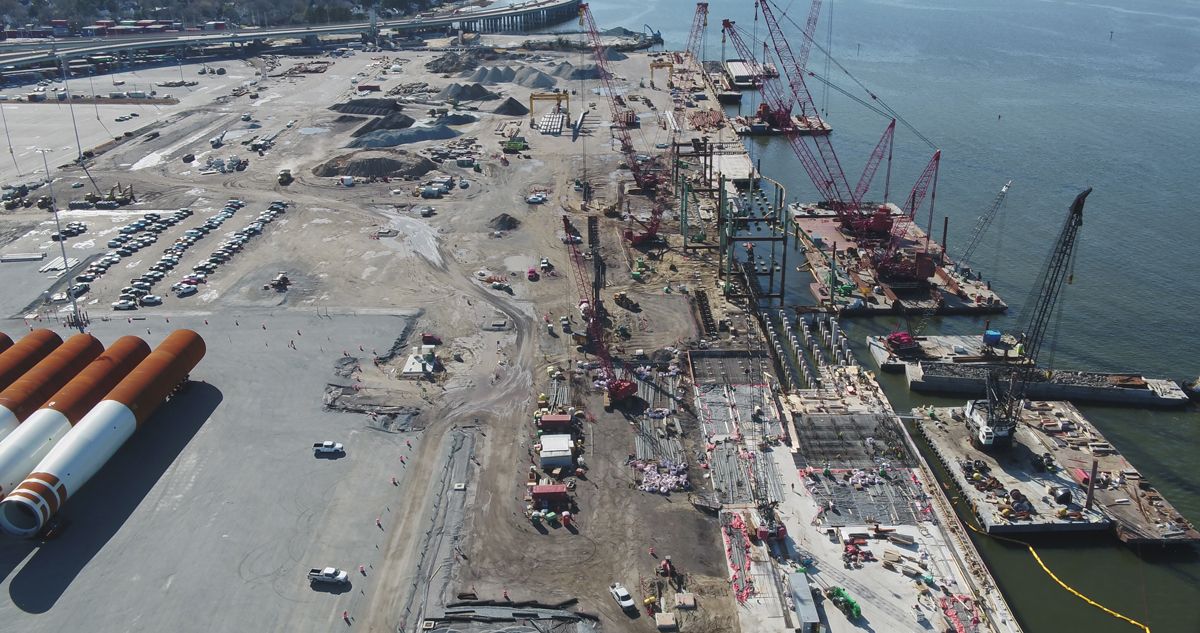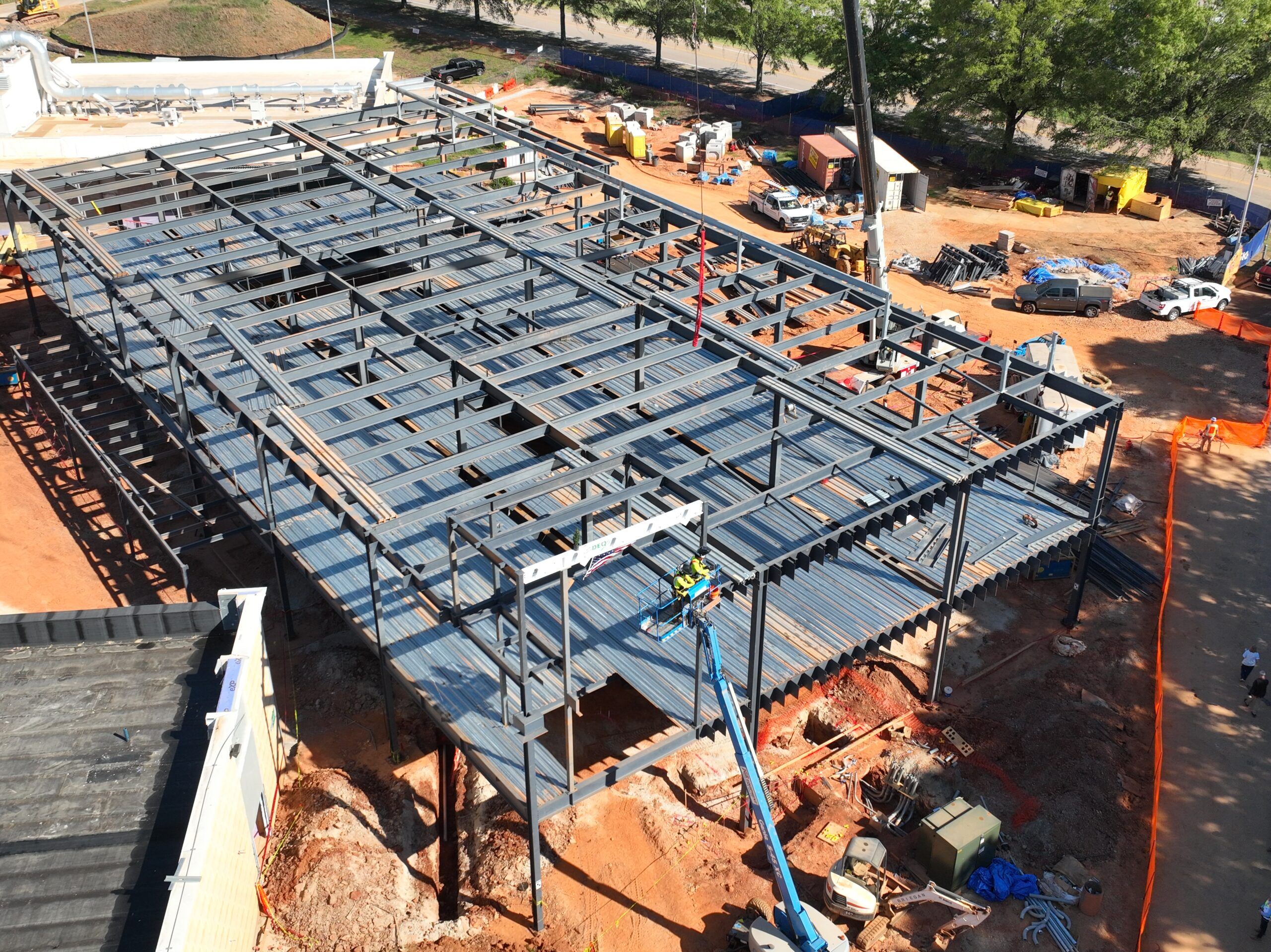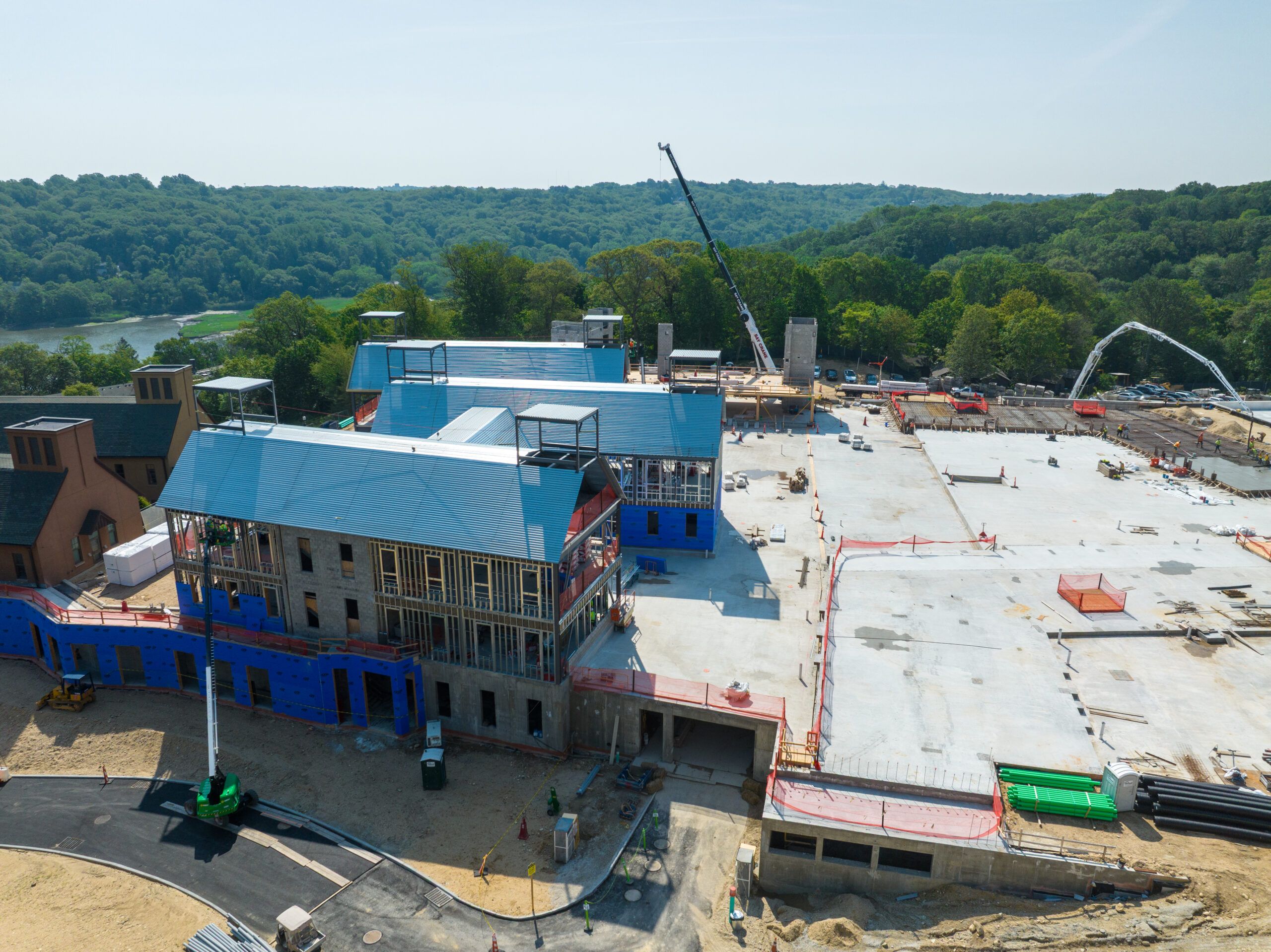In a significant milestone for Port of Virginia‘s critical infrastructure, the comprehensive redevelopment project at Portsmouth Marine Terminal was completed in March 2025. The massive construction job transformed 72 acres of terminal space and 1,500 feet of wharf into a specialized offshore wind staging port—and positioned Virginia as a strategic location in the offshore wind industry.
The renovated terminal now serves as the staging ground for Dominion Energy‘s Coastal Virginia Offshore Wind (CVOW) project—one of the country’s largest offshore wind installations and at the nation’s sixth largest container cargo port. When fully operational, the project will generate 2.6 gigawatts of energy, enough to power 660,000 homes a year.
The project supports the vital role of the Virginia Port Authority and Dominion’s work to build and maintain zero-carbon energy infrastructure while also benefiting local communities through job creation.
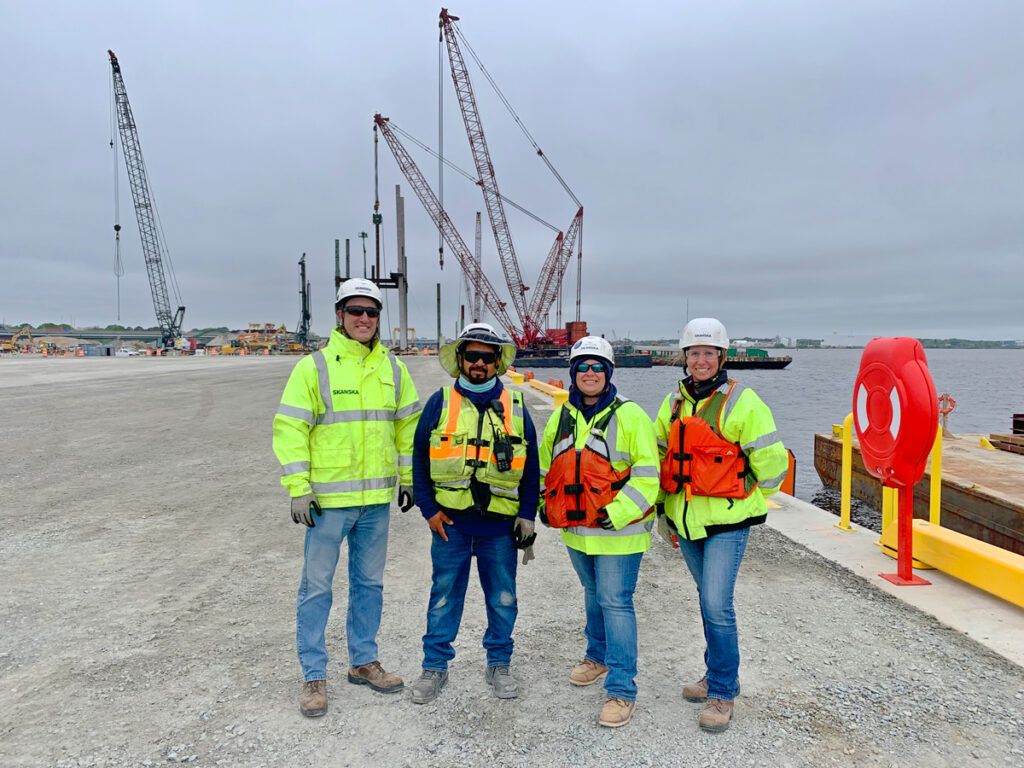 Engineering Feat
Engineering Feat
The three-year redevelopment, which commenced in 2022, represents a remarkable feat of civil engineering. Key components of the project included:
- Construction of three specialized heavy lift berths: one for wind turbine generator delivery, another for wind turbine generator load-out, and a third dedicated to steel tube monopiles.
- Extensive soil reinforcement and surface strengthening to support massive weights from industrial cranes, self-propelled modular transporters, wind turbine generators, and monopile components.
- Installation of high-mast lighting systems, comprehensive stormwater management infrastructure, and various supporting structures.
- Installation of 1,335 piles, each stretching 150 feet in length (totaling 37 miles if placed end-to-end).
- Placing of 26,500 cubic yards of concrete throughout the facility.
The terminal now serves as the collection and storage site for components of 176 enormous wind turbines that will comprise the CVOW project. These components will be transferred to specialized installation vessels that will position them offshore.
As part of the project sustainability efforts, approximately 200,000 tons of asphalt and 50,000 tons of concrete were recycled on site and repurposed for use in the new construction, significantly reducing waste and environmental impact.
Economic and Industrial Impact
The Portsmouth Marine Terminal redevelopment represents more than just an infrastructure upgrade—it’s a strategic investment in Virginia’s economic future and industrial capacity. The upgraded terminal creates immediate construction and operational jobs while establishing Virginia as a critical link in the offshore wind supply chain.
Industry experts note that the project exemplifies the type of infrastructure investments needed to support large-scale energy projects. The Portsmouth Marine Terminal redevelopment provides specialized facilities required for staging, assembling and deploying the massive components used in offshore wind farms.
While creating an estimated 2,000 direct and indirect jobs, the CVOW project is expected to generate fuel savings of $2 billion for customers during the project’s first 10 years of operation, according to Dominion.
The American Association of Port Authorities forecasts a 15% increase in U.S. freight movement by 2045. By 2037, U.S. seaports are anticipated to export more than 52 million shipping containers annually. As 90% of global goods are conveyed via ship, port disruptions can reverberate through the global economy, making infrastructure fortification and enhanced port resilience critical for the future of safe freight movement.
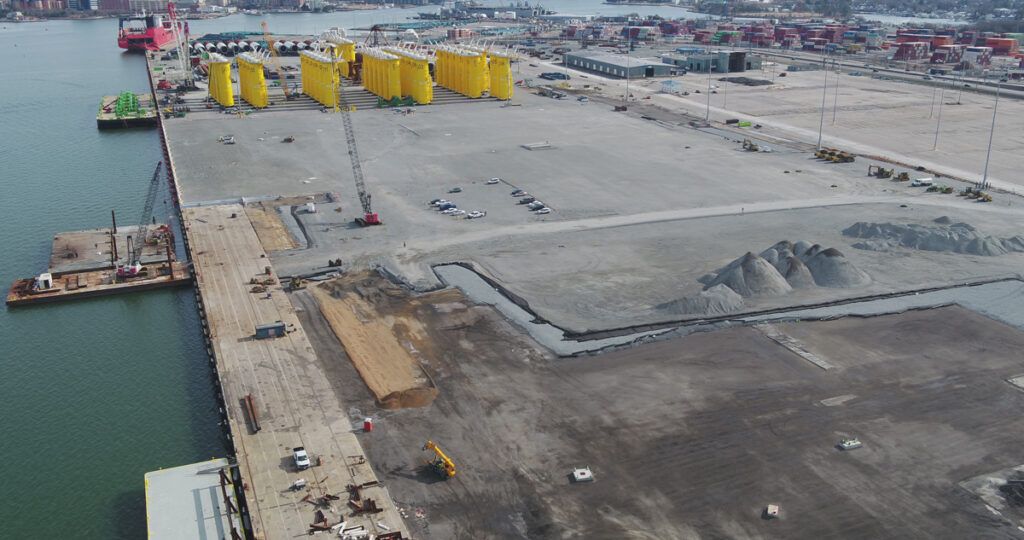 Part of a National Movement
Part of a National Movement
With favorable Atlantic Ocean wind conditions and increasing development in this sector, the Eastern Seaboard may witness significant investment in offshore wind projects. Nationwide, there are currently more than 50 significant construction projects aimed at enhancing the sustainability and efficiency of port operations.
These include the transformation of the South Brooklyn Marine Terminal into one of the nation’s largest dedicated offshore wind ports, the Port of Savannah’s development of pop-up container yards to alleviate congestion and approximately $5.4 billion in expansion projects across Gulf Coast ports.
These initiatives reflect a broader commitment to sustainability, enhancing the resilience and competitiveness of American ports in the global economy. By focusing on clean energy, electrification and modernization, the Port of Virginia and other ports are setting a new standard for port operations, ensuring long-term benefits for the nation.
The substantial completion of the Portsmouth Marine Terminal redevelopment represents the beginning of a new chapter in Virginia’s industrial story—one where the commonwealth plays a pivotal role in America’s offshore wind development and clean-energy goals.
Port of Virginia’s Sustainability Vision
The Portsmouth Marine Terminal project is part of the Port of Virginia’s ambitious commitment to becoming NetZero by 2040. This milestone aims to eliminate the port’s carbon footprint through various green initiatives, including the transition to renewable energy sources, the electrification of port operations and infrastructure modernization.
The redevelopment aligns with broader port sustainability efforts, which include energy utilization through investments in wind and solar power, electrification of diesel-powered equipment and comprehensive infrastructure modernization designed to handle larger volumes of cargo more effectively while reducing environmental impact.
Brent Hunt is Project Executive for Skanska USA Civil.




